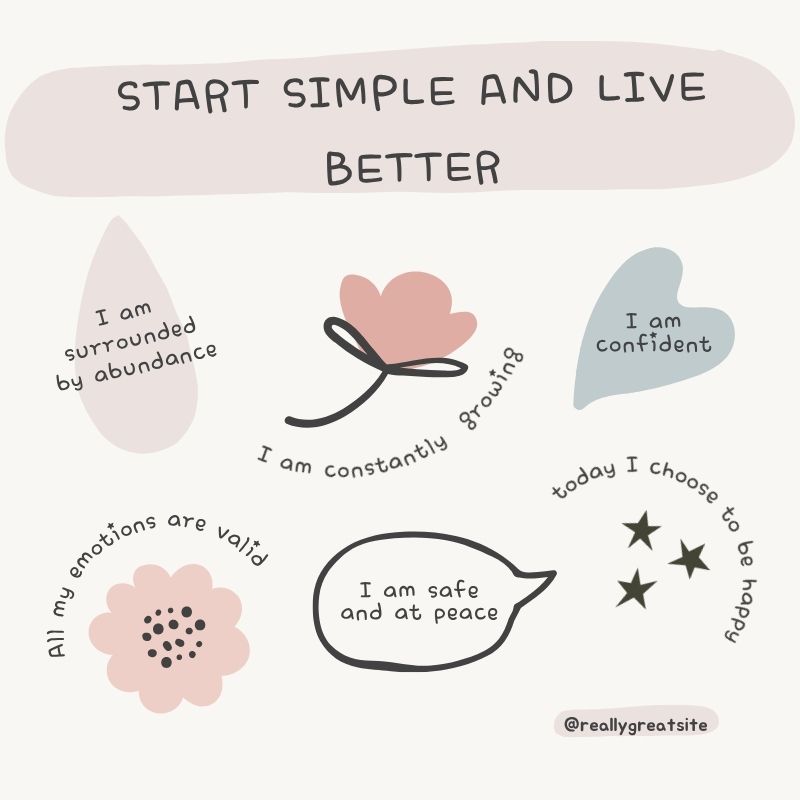In a world overflowing with things — from cluttered homes to endless notifications — many people are seeking a simpler, calmer way to live. That’s where minimalism comes in.
Minimalism isn’t about owning nothing; it’s about owning only what adds value to your life. It’s the intentional choice to remove distractions so you can focus on what truly matters — peace, purpose, and presence.
If you’re just starting, these minimalist lifestyle tips for beginners will help you embrace simplicity step by step and experience more clarity, joy, and balance every day.
1. Start to Become a Minimalist by Asking Questions

Minimalism begins in the mind, not the closet.
Ask yourself questions that bring clarity:
- What makes me feel calm and fulfilled?
- What am I keeping out of guilt or habit?
- If I lost everything today, what would I truly miss?
To develop deeper self-awareness, explore how to practice mindfulness in daily life. These reflections help you understand your values and redefine what “enough” means to you. When your priorities are clear, letting go becomes easier.
2. Create a Support System for Your Minimalist Journey
Starting fresh can feel lonely if those around you don’t understand.
Find inspiration and accountability through minimalist communities, podcasts, or social media groups. For better mental resilience during change, read how to build emotional resilience naturally. Support helps you stay consistent and inspired, even on tough days.
If your friends or family aren’t on board yet, that’s okay. Minimalism is a personal journey, not a group project. Support helps you stay consistent and inspired, even on tough days.
3. Encourage, Don’t Convince Others
When you begin to feel lighter and happier through simplicity, you might want others to join in. But remember — change can’t be forced.
Instead of persuading loved ones, lead by example. When they see your peace and presence, they’ll grow curious naturally. Learn the benefits of meditation for mental clarity to strengthen your calmness from within.
4. Take Tiny Steps Toward Minimalism
Minimalism doesn’t happen overnight. Begin small:
- Clear one drawer, one shelf, or one digital folder.
- Try the “one in, one out” rule — for every new item you bring home, remove one.
- Tackle one category at a time (clothes, books, emails).
For physical and mental balance, pair decluttering with a beginner workout routine for weight loss at home to energize your body as you simplify your space.
5. Don’t Fill Up All the Spaces
Once you declutter a space, resist the urge to refill it. Empty space is not wasted — it’s freedom.
A clear shelf, open calendar, or quiet evening can become a breath of fresh air in your daily routine. Embrace the stillness; that’s where mindfulness and creativity grow.
6. Try a Minimalist Challenge or Experiment
Practical experiments make minimalism fun and rewarding. Try:
- The 30-Day Minimalism Challenge: Remove one item each day.
- Project 333: Build a capsule wardrobe with only 33 items for three months.
- Digital Detox Week: Limit screen time and delete unused apps.
During digital detoxes, you can also learn the effects of screen time on your sleep cycle to support mental clarity and better rest.
7. Don’t Work So Hard at Becoming a Minimalist
Ironically, many beginners turn minimalism into another form of pressure — trying to have the perfectly clean home or Pinterest-ready lifestyle.
Relax. Minimalism is not about rules or aesthetics — it’s about alignment.
If something adds genuine joy or meaning to your life, keep it. The goal is peace, not perfection.
8. Create a Minimalist Mindset
A minimalist lifestyle starts with decluttering, but it deepens with mindset.
Shift from “I want more” to “I have enough.”
Practice gratitude daily and focus on experiences over possessions. Fuel your body mindfully with a clean eating plan on a budget and focus on healthy lifestyle habits for adults that complement your minimalist journey. Minimalism is less about restriction and more about freedom through awareness.
9. Don’t Forget to Have a Life
Minimalism should give you more life, not less. Use the time and energy you gain from simplifying to explore your passions, travel light, or spend time with people who matter.
A minimalist life is about making room for joy, not creating a rigid routine.
10. Trust Yourself to Do What’s Best for You
There’s no single right way to be a minimalist. Your version might look different from someone else’s — and that’s perfectly fine.
Trust your instincts, take it slow, and celebrate your progress.
The beauty of minimalism is that it adapts to you — your home, your goals, your values.
11. Common Mistakes Beginners Make
Even with the best intentions, beginners can fall into a few traps:
- Decluttering too fast and regretting later
- Comparing their home or lifestyle to others online
- Thinking minimalism means cold, empty spaces
Avoid these by focusing on intention over image and progress over perfection.
12. Key Benefits of a Minimalist Lifestyle
When practiced with patience and consistency, minimalism brings powerful benefits:
- Less stress and decision fatigue
- Improved focus and creativity
- More time and money for what truly matters
- A sustainable and mindful way of living
Each item you release is one less thing demanding your energy — and one more step toward inner peace.
13. Quick Minimalist Starter Tips
To begin right now:
- Unsubscribe from 5 unnecessary emails today.
- Spend one day without social media.
- Donate 10 unused items from your closet.
- Simplify your morning routine — choose comfort and clarity.
Support your energy and immune health with the best foods to boost your immune system naturally.
Conclusion
Minimalism isn’t about less for the sake of less — it’s about more of what truly matters.
When you remove excess clutter, you make room for meaning, peace, and presence.
Start small, stay mindful, and trust your journey. For more inspiration on living well, explore more guides at Mindscribes.com.

